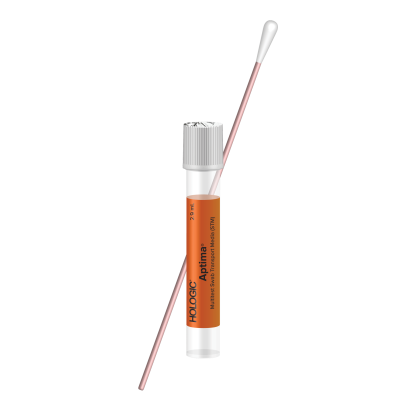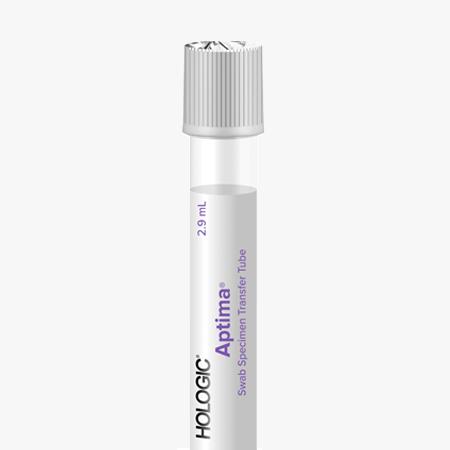M.genitalium NAAT
Specimen Requirements
Call Rutland Regional Medical Center Laboratory Customer Service at 802-747-1771 to obtain Specimen Cups, Multitest Swabs or ThinPrep® Pap/PreservCyt® Media
Specimen Type: Vaginal 
Container/Tube: Aptima Multitest Swab (Orange Tube)
Specimen Volume: Entire specimen
Collection Instructions: Follow instructions on Aptima Multitest Vaginal Collection Guide
Stability: Ambient 30 days
Specimen Type: Male Urethral and Endocervical 
Container/Tube: Aptima Unisex Swab (Blue Swab)
Specimen Volume: Entire specimen
Collection Instructions: Follow instructions on Aptima Unisex Swab Collection Guide
Specimen Type: Urine (Male or Female)
Container/Tube: Sterile Urine Cup
Specimen Volume: 30-40 mL
Collection Instructions: Collect 30-40 mL first, dirty urine
Reference Aptima Male and Female Urine Specimen Collection for Lab
Stability: (non transfered urine) Refrigerated 24 hours
Performing Laboratory
Rutland Regional Medical Center Laboratory
Reference Values
Negative
Day(s) Performed
Monday to Friday
Analytical Time:
1-4 days
Methodology
Transcription-Mediated Amplification
Test Classification and CPT Coding
CPT: 87563
LOINC: 100706-1
Order Code:
Result Code:
Result Name:
Specimen Transport Temperature
Urine: (non transfered urine) Refrigerated 24 hours
Multitest and Unisex Swab: Ambient 30 days
Specimen Retention: will hold specimen 7 days after testing
Cautions
Cautions
Care must be taken to avoid cross-contamination during handling of specimens.
This test does not detect other Mycoplasma or Ureaplasma species.
This test is intended for clinical monitoring or management of patients; it is not intended for use in medico-legal applications.
Appropriate specimen collection and handling are necessary for optimal assay performance.
Results should be interpreted in conjunction with other laboratory and clinical findings.
A negative test result does not exclude the possibility of infection. Improper specimen collection, concurrent antibiotic therapy, presence of inhibitors, or low numbers of organisms in the specimen (ie, below the sensitivity of the test) may cause false-negative test results.
In low prevalence populations, positive results must be interpreted carefully as false-positive results may occur more frequently than true-positive results in this setting.
In general, this assay should not be used to assess therapeutic success or failure, since nucleic acids from these organisms may persist for 3 weeks or more following antimicrobial therapy.
The effects of use of tampons, douching, specimen types other than those listed in Specimen Required, and specimen collection variables have not been determined.
Testing of urine specimens with this method is not intended to replace cervical exam and endocervical sampling for diagnosis of urogenital infection; infections may result from other causes or concurrent infections may occur.
Interference in assay results was observed when mucus at a final concentration of 0.3% weight/volume was added to clinical specimen matrix. Interference was not observed when mucus at a final concentration of 0.03% weight/volume was added to clinical specimen matrix.
Performance of the assay has not been evaluated in individuals younger than 15 years of age.
Clinical Reference
Waites KB, Crabb DM, Ratliff AE, Geisler WM, Atkinson TP, Xiao L. Latest advances in laboratory detection of mycoplasma genitalium. J Clin Microbiol. 2023;61(3):e0079021. doi:10.1128/jcm.00790-21
Interpretation
Interpretation
A positive result indicates the presence of nucleic acid from Mycoplasma genitalium and strongly supports the diagnosis of a M genitalium infection.
A negative result indicates that nucleic acid from M genitalium was not detected in the specimen.
A result of inconclusive indicates that a new specimen should be collected.
The predictive value of an assay depends on the prevalence of the disease in a specific population. In settings with a high prevalence of sexually transmitted infections, positive assay results have a high likelihood of being truly positive. In settings with a low prevalence of sexually transmitted infections, or in any setting in which a patient's clinical signs and symptoms or risk factors are inconsistent with urogenital infection, positive results should be carefully assessed, and if appropriate, the patient retested by other methods.
